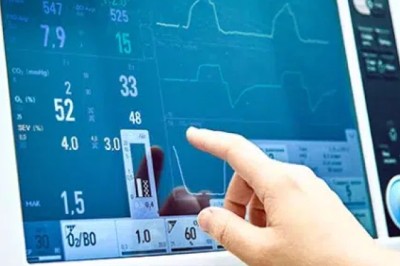views

Knowing the financial health of a setup is crucial to plan its operations, growth, and success smoothly. Not having any update regarding the financial health of the setup can prove fatal for the business. Everything may not be as smooth and functional as it appears on the surface. You must utilize a few metrics to assess the financial health and stability of the setup.
The setups can flourish and make progress if they devise a business strategy and implement it smoothly. However, it will only be effective when you are aware of the financial standing of your setup.
Keep scrolling down into the details of this article to learn and explore how you can assess the financial health of your business and implement strategies to boost your success.
Top 6 Metrics to Check Financial Health of Business
Operating the business on a day-to-day approach is not commendable. It may offer a few benefits; however, you will not be prepared to deal with future challenges. It can also cause irreparable loss to your setup. Implementing metrics to assess financial health can promise long-term growth and success of the setup.
Here are the major metrics you can follow or implement to check the financial health of your business and ensure its growth and development.
1. Profitability Metric
The profitability metric is the basic metric to measure the financial health of a business setup. The income statement, also known as the profit and loss statement, offers deeper insights into profitability. It highlights the operating profit, the gross profit, and the net profit, which help explore the overall profit. You must assess the profitability for at least three years to ensure the actual profits. Growth in sales does not promise profits, so you must not get mistaken. Many organizations hire chartered accountant firms in Dubai and let experts assess and improve financial health.
2. Liquidity Metric
The liquidity metric is the next and most crucial metric to check the financial health of a setup. This metric measures and compares the working capital and current ratio of the setup to assess its financial health. The purpose is to explore how much funds the business requires to operate and fulfill the current needs or expenses. It measures the current assets and liability of the setup, which impacts its smooth functioning. The current assets mean the receivables, and liability means the payables. So, the assets should be more than liabilities for the business to flourish.
3. Leverage Metric
Leverage metric is the next notable metric you should implement to evaluate the financial health of your setup. This particular metric is focused on the debt of the organization, which can limit its success and profitability. The owner must invest more amount into the business as compared to the creditor to have the upper hand and better control over the finances. The debt a business owes to other parties should always be limited to help the business last longer. Moreover, you must assess the debt-to-equity and debt-to-asset ratios of the business to evaluate its solvency.
4. Cash Flow Metric
The cash flow metric is one of the most notable metrics you can put to use to measure the financial health of your business. This metric highlights the amount of cash coming into the business operations versus the amount of cash going out. The cash flow metric highlights the sustainability of the setup. If more cash is going out than the amount coming in, it represents negative cash flow and poor sustainability. You must be clear and diligent in checking cash flow as it is not recorded in the balance sheet. You can even hire professionals to manage everything smoothly.
5. Activity Metric
Activity metric is the next essential metric you should measure to assess the financial health of the setup. It highlights the resources of an organization that significantly impact its growth and success. It includes fixed asset turnover, inventory turnover, account receivable turnover, and the average turnover period. Having enough inventory highlights the smooth operationality of the setup. On the other hand, having too much on board can limit the capital business can use for other purposes. Activity metric helps assess the healthy balance, which further contributes to growth.
6. Growth Metric
The growth metric is the last metric you can implement to assess the financial health of your setup. The business may seem to be flourishing but not actually growing, so it is crucial to check the actual growth. The increase in profits, sales revenue, employees, customers, and working capital establish the growth of the setup. However, the overall profit should not be less than the running cost or expenses, as it can lead to loss. You can hire experts and let them measure as well as accelerate the financial growth of your setup and enjoy success.
Unsure how to implement the metrics?
It requires expert-level knowledge and skills, which you might not have. Feel free to contact professional chartered accounts and let experts measure and accelerate the growth of your setup.






















Comments
0 comment